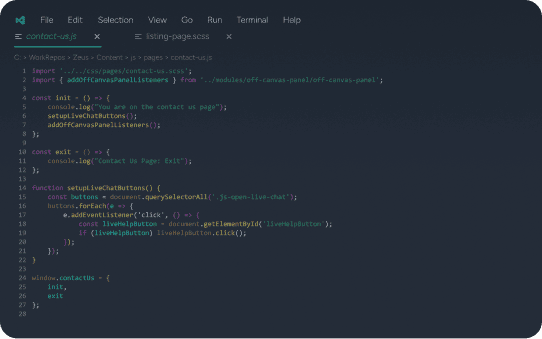
Headless commerce guide
Allow for greater flexibility, customisation and rapid time-to-market.
Introduction to headless commerce
Headless architecture and simple API integrations give you the flexibility to engage customers across every retail touchpoint from web, mobile and apps, to marketplaces and in-store while delivering a seamless omnichannel experience.
The headless decoupling of your platform backend and frontend storefront(s) lets you make changes to both systems separately, unlocking whole new levels of adaptability.
Remarkable Commerce use a pre-integrated front-end accelerator to slash the time-to-market for new digital storefronts, allowing you to focus on UX, brand strategy, and optimisation: ultimately growing your brand rather than getting sidetracked with technological challenges.
| Key differences | Headless | Traditional |
|---|---|---|
Frontend, UX and styling | Unlimited styling control. No data changes required. | All content connected and styled collectively. Components are connected. |
Personalisation | True 1:1 content personalisation without development work. Pull/push data from multiple sources. | Slow to implement and slow to update. Inaccessible data requirements. |
Development agility | Add new channels at speed. Effortless integrations. | Higher IT / maintenance costs. Slow time to market and inability to add new custom functions. |
Optimise performance | Faster conversion rate optimisation. Launch and remove tests (like adding new functions) with ease | Site performance is tied to backend. Unable to speed up site due to passing of data. |
Featured headless story
Crafted with love, enabling growth at speed! Westbrook Cycles launched their headless, scalable and engaging new eCommerce storefront to the delight of their customers.
Read their success story
Unify your customer experiences across all touchpoints
Headless commerce software perfectly meets today’s need for an efficient omnichannel customer experience. The unique structure of this software allows it to deliver unlimited flexibility and unified experiences with multi-device access.
Customer needs and expectations change over time, but they should still receive a consistent customer experience across all devices and channels. Each touchpoint that a customer has with your brand holds a different weighting towards their purchase, and any poor experience may discourage them from converting altogether.
This is why unifying your customer experience is incredibly important for every brand.
Going beyond the typical “people who bought X also purchased Y”, customers now expect brands to talk directly to them with their marketing efforts, using data to power the personalisation elements on CMS, mobile apps, and social channels.

Freedom to choose best-of-breed eCommerce solutions
Thanks to an API-first approach, headless commerce gives you the freedom to build a fully adaptable eCommerce stack with all the best-of-breed solutions, from eCommerce platforms, headless CMS, and 3rd party integrations (including checkout, site search, loyalty programs, and PIM), to any legacy systems that the business is tied to.
The headless approach gives complete freedom to plug, unplug, and exchange individual solutions, working easily and configurations to find the ideal combination for your brand.
Additional points to consider
Is headless commerce worth it?
Data quality and API access
Before moving over to a headless-style platform, it's well worth reviewing the quality of your product data to make sure that you can pull all the data you want via APIs. If this is not currently possible, a different approach may be needed.
Tech complexities
Occasionally, systems and technology are not compatible, meaning you are forces to find lengthy or costly workarounds, or relying on middleware to connect systems together.
Business size
Due to the time and complexities involved in a headless commerce setup, it is generally thought that your business should have an annual turnover of at least £50m to warrant the investment.
Considering a headless eCommerce platform?
With Remarkable Commerce, there is no limitation on the amount of flexibility or configurability achievable












